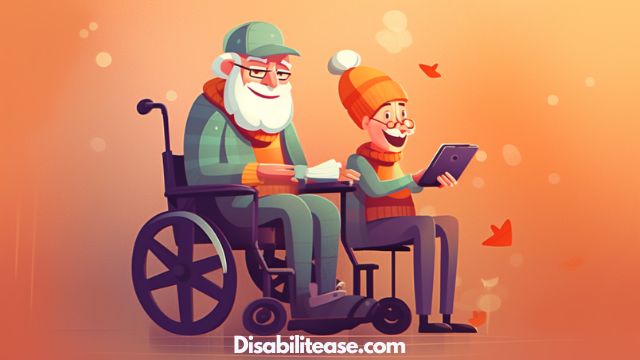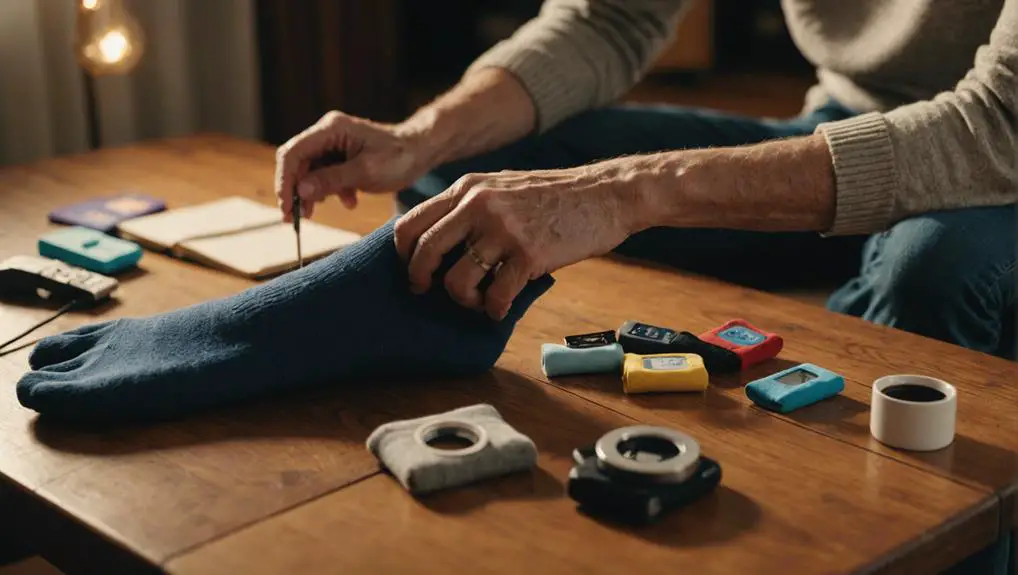Technology has come a long way in improving the quality of life for disabled and elderly individuals. In recent years, technology has been used to create tools and services that make day-to-day activities easier, more convenient, and more enjoyable.

These innovations have made it possible for those with physical or cognitive disabilities to lead fuller lives. You may be wondering how technology can help disabled or elderly people?
This article will explore three key areas: assistive technology, education and training, and social connectivity.
Table of Contents
Assistive Technology
Assistive technology can make a huge difference in the lives of disabled and elderly individuals, improving their independence and quality of life.
From speech generating devices to remote monitoring systems, the use of assistive technology has increased awareness among individuals with disabilities about the range of accommodation options available to them.
Despite this progress, access barriers such as cost, lack of information, or limited availability still exist. Fortunately, organizations like the Assistive Technology Industry Association (ATIA) are actively working to increase access by providing resources such as training materials and product demos for those interested in exploring assistive technologies.
As important as products are in terms of increasing accessibility, so too is understanding how people with disabilities use these products in everyday life.
By involving people with disabilities at all stages of product design and development—from concept origination through implementation—we can create more effective solutions that meet the needs of users while also taking into account any physical or financial limitations they may have.
Furthermore, research shows that when service providers understand how assistive technology works and its potential benefits for an individual’s health and well-being, they are better equipped to support people with disabilities in finding an appropriate solution for their needs.
Through education on available assistive technologies and greater involvement from people with disabilities during product design stages, we can ensure that disabled and elderly individuals around the world get improved access to these tools that will empower them to lead more independent lives.
Education and Training
You can learn new skills and gain knowledge with the help of specialized programs and platforms designed for those with physical or mental challenges. Adaptive curriculums allow teachers to modify content based on a student’s individual needs and abilities.
Virtual tutors provide personalized instruction from remote locations so that disabled individuals can still receive quality education without having to attend a brick-and-mortar school.
Accessible online courses use different technologies like audio description, text-to-speech, and alternative input methods to make digital course materials more accessible for people with disabilities.
Special educational tools can be used to enable users with limited mobility or vision impairments to explore interactive activities in an inclusive environment.
By providing these types of resources, technology has opened up a world of possibilities for disabled or elderly individuals who wish to continue their education.
Through adaptive curriculums, virtual tutoring sessions, online courses tailored for accessibility requirements, and special educational tools designed specifically for these populations’ unique needs – technology is making it easier than ever before for everyone to pursue their educational goals regardless of their ability levels or age.
Social Connectivity

In this discussion, we’ll explore ways technology can help disabled and elderly individuals stay socially connected. Video conferencing and communication tools make it easy to stay in touch with friends and family.
Online shopping and delivery services provide access to a variety of goods for those who can’t leave their homes. Finally, online support groups and resources give people facing similar challenges a safe space to come together and share tips and experiences.
Video Conferencing and Communication Tools
Connecting with loved ones can be made easier with video conferencing technology, allowing those with mobility issues or who are housebound to keep in touch. Thanks to the rise of virtual reality, wearable devices, and other technologies specifically designed for communication, individuals with disabilities or advanced age can stay connected to their family and friends no matter where they are located.
These tools allow users to video chat, share photos and videos, and even participate in virtual activities such as playing online games together all from the comfort of one’s own home.
The use of video conferencing technology can also help reduce social isolation by giving elderly or disabled individuals more opportunities for meaningful conversation and interaction. With these platforms, people are able to have face-to-face conversations with others from around the world without worrying about physical accessibility issues that may arise when trying to meet up for a face-to-face conversation.
Furthermore, many popular video conferencing software programs come with features such as text messaging and file sharing capabilities which make conversations simpler and less time consuming than traditional methods of communication like phone calls or emails. Finally, these platforms offer greater control over safety since users can set up private meetings that cannot be accessed by anyone outside of the meeting participants.
Online Shopping and Delivery Services
Online shopping and delivery services have revolutionized the way people shop, making it easier than ever for those who may be unable to leave home to get the products they need.
For disabled or elderly individuals, online shopping can provide a convenient alternative to having to physically visit stores. Many online stores offer accessible interfaces with larger fonts and buttons as well as virtual assistants that allow users to easily search for items using voice commands.
Additionally, many grocery stores now offer delivery options so that these individuals can order groceries without having to leave their homes.
The convenience of online shopping and delivery services has made life much easier for disabled or elderly individuals by providing them with greater access to goods and services that would otherwise be unavailable due to physical restrictions.
| Features | Benefits |
|---|---|
| Accessible interfaces with larger fonts & buttons | Easier navigation of websites |
| Virtual assistants | Ability to search for items using voice commands |
| Delivery options from grocery stores | No need to leave home for groceries |
Online Support Groups and Resources
Providing a source of connection and support, online support groups and resources can offer invaluable aid to those who may be unable to access traditional forms of help. For the elderly or disabled, these virtual platforms can provide enhanced independence and a way for them to stay connected with others.
Here are three ways that online support groups and resources can improve their lives:
- Virtual companionship – Online communities can become like families, offering much needed socialization for those who may not have the opportunity or ability to go out and meet people in person.
- Accessible information – With just a few clicks, members of these support groups have access to valuable advice from peers going through similar situations as well as experts on various topics related to their condition.
- Inclusive environment – These virtual spaces are often designed with accessibility features such as voice-over technology so individuals with impaired abilities have full access and participation in conversations or activities taking place in the group.
Conclusion
It’s clear that technology has a lot to offer disabled or elderly individuals. From assistive tech to social connectivity, there are countless ways in which these people can benefit from modern advancements.
You don’t have to be an expert in tech either, as there are resources available for those who need help getting started with the basics. With some education and training, you can make sure your loved ones have access to all the amazing tools technology has to offer them.
It’s time we embrace our technological advances and use them to improve the lives of those around us!

Hi, my name is Eddie, I am a professional trainer specializing in the elderly population and I’m also a website designer. I love training in the gym, going to the beach, traveling, and having good food.
I combined my love for sport and website designing to make “DisabilitEase” whose purpose is to help elderly and disabled people live a more full and active life, have more fun, and enjoy their unique journey despite any disability.


